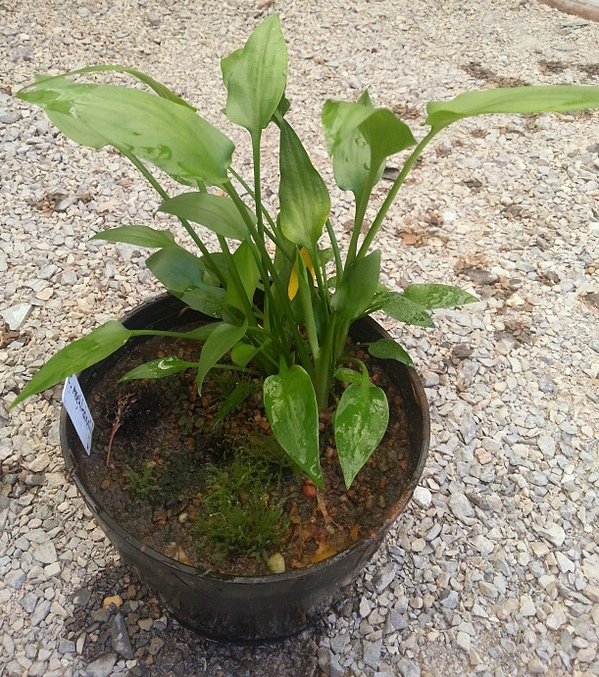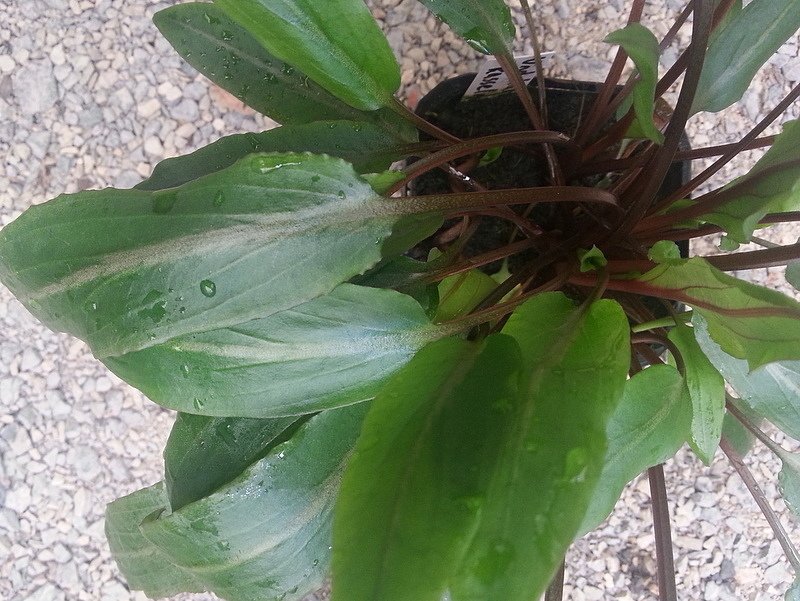

The plant pictured was given to me by a long time plant grower who's had this in his plant room for 30+ years as Cryptocoryne evae and has sold it to many enthusiasts over the years under that name.
Cryptocoryne evae and Cryptocoryne blassii are old names that are now considered synonyms Cryptocoryne cordata var. siamensis. Although they are now considered the same species, there can be subtle differences in the varieties that warrent keeping them separate in cultivation. For this reason the full name of the 'blassii' variety is Cryptocoryne cordata var. siamensis 'blassii' and therefore this 'evae' plant is Cryptocoryne cordata var. siamensis 'evae'.
Confusion in crypt taxonomy is not a new thing and there is more than one online database that still uses the "evae" name.
The source grower thinks the underside of the leaves may be paler red (more green) when compared to blassii, but that could also result from growing conditions (and that red leaf bottom left looks very much like my blassii). I'll grow evae side-by-side with blassii and see if any differences are maintained.












